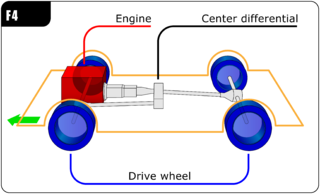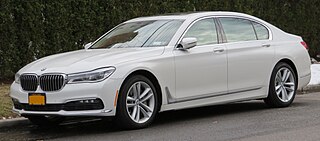
The Combat Vehicle 90 is a family of Swedish tracked combat vehicles designed by Sweden's Defence Materiel Administration, Hägglunds and Bofors during the mid-1980s to early 1990s, entering service in Sweden in the mid-1990s. The CV90 platform design has continuously evolved in steps from Mk0 to current MkIV with advances in technology and in response to changing battlefield requirements. The Swedish version of the main infantry fighting vehicle (IFV) is fitted with a turret from Bofors that is equipped with a 40 mm Bofors autocannon. Export versions are fitted with Hägglunds E-series turrets, armed with either a 30 mm Mk44 or a 35 mm Bushmaster autocannon.

The Patria Pasi is a Finnish-made six-wheeled armoured personnel carrier (APC) originally designed for Finnish Defence Forces. The first version was produced in 1983 and serial production began in 1984. It was designed to operate with ease of use, simple structure and low-cost maintenance. The basic appearance and configuration of Patria Pasi is similar to most wheeled APCs. The XA-180 and XA-185 versions are fully amphibious while the XA-203 is not.

The Patria AMV is an 8×8 multi-role military vehicle produced by the Finnish defence industry company Patria.

A diesel–electric transmission, or diesel–electric powertrain is a transmission system for vehicles powered by diesel engines in road, rail, and marine transport. Diesel–electric transmission is based on petrol–electric transmission, a very similar transmission system used for petrol engines.
Hybrid Synergy Drive (HSD), also known as Toyota Hybrid System II, is the brand name of Toyota Motor Corporation for the hybrid car drive train technology used in vehicles with the Toyota and Lexus marques. First introduced on the Prius, the technology is an option on several other Toyota and Lexus vehicles and has been adapted for the electric drive system of the hydrogen-powered Mirai, and for a plug-in hybrid version of the Prius. Previously, Toyota also licensed its HSD technology to Nissan for use in its Nissan Altima Hybrid. Its parts supplier Aisin Seiki Co. offers similar hybrid transmissions to other car companies.
R.T. Quaife Engineering, Ltd. is a British manufacturer of automotive drivetrain products. It designs and manufactures motorsport and performance orientated gearboxes, gearkits, differentials, steering racks and axle kits, along with many other associated drivetrain products.

The Mercedes-Benz Atego is a range of general-purpose rigid trucks introduced by Daimler Truck in 1998. A new model was introduced in 2004, followed by a facelift in 2010 and another new model in 2013. The latest version is available in gross vehicle weights of 6.5 to 16 tonnes (t) and is powered by a straight 4- or 6-cylinder engine.

The Pandur II is an improved modular all-wheel-drive version of the Pandur 6x6 APC wheeled armoured vehicle. It was developed as a private venture by the Austrian company Steyr-Daimler-Puch Spezialfahrzeuge. Steyr-Daimler-Puch Spezialfahrzeuge is part of General Dynamics European Land Combat Systems, which is also the parent company of MOWAG of Switzerland and Santa Bárbara Sistemas of Spain.
Hybrid vehicle drivetrains transmit power to the driving wheels for hybrid vehicles. A hybrid vehicle has multiple forms of motive power.
The following outline is provided as an overview of and topical guide to automobiles:

The BMW X6 is a mid-size luxury crossover SUV by German automaker BMW. The BMW X6 is the originator of the sports activity coupé (SAC), referencing its sloping rear roof design. It combines the attributes of an SUV with the stance of a coupé. It is built in BMW's North American plant in Greer, South Carolina alongside the BMW X5, whose platform it shares. Prior to the release of the X7, the X6 was considered a flagship SUV for BMW.

In automotive design, an F4, or front-engine, four-wheel drive (4WD) layout places the internal combustion engine at the front of the vehicle and drives all four roadwheels. This layout is typically chosen for better control on many surfaces, and is an important part of rally racing, as well as off-road driving. In terms of racing purposes, whether it be on-road or off-road, can be described as follows,
A team that pursues the Weak LS4WD architecture will minimize the development cost of the front-wheel drive system at the expense of having a larger rear powertrain. The Weak architecture produces a vehicle with a large powersplit between the front and rear powertrains, while the Strong architecture recommends a vehicle with more similar power and torque requirements for the front and rear.

Eight-wheel drive, often notated as 8WD or 8×8, is a drivetrain configuration that allows all eight wheels of an eight-wheeled vehicle to be drive wheels simultaneously. Unlike four-wheel drive drivetrains, the configuration is largely confined to heavy-duty off-road and military vehicles, such as all-terrain vehicles, armored vehicles, and prime movers. Other types of smaller 8x8 vehicles include such things as the Argocat.

The Type 96 Wheeled Armored Personnel Carrier is an armoured vehicle that entered service with Japan in 1996.

The wheel hub motor is an electric motor that is incorporated into the hub of a wheel and drives it directly.
Protean Electric is an automotive technology company specializing in in-wheel motor technology. The company has developed an in-wheel, electric-drive system for hybrid, plug-in hybrid, and battery electric vehicles. Their technology creates a permanent magnet e-machine with relatively high torque and power density with the power electronics and controls packaged within the motor itself. Their in-wheel motor product is intended to be produced in low volume by Protean Electric and licensed in high volume to global automotive and Tier 1 automotive supply companies. Protean Electric is a privately held company with approximately 114 employees. Protean Electric has operations in the United States, United Kingdom, and China.

GKN Automotive is a multinational manufacturer of driveline components, all-wheel drive systems and eDrive systems for the automotive industry. It employs around 27,500 people across 51 manufacturing facilities and 6 technology centres in 20 countries. In 2018, GKN Automotive’s parent company, GKN Ltd, was acquired by Melrose and its automotive business was renamed GKN Automotive. This encompasses both the Driveline and ePowertrain divisions.

The BMW X5 (F15) is a mid-size luxury SUV manufactured and marketed worldwide by BMW since 2013. The car was unveiled in the 2013 Frankfurt International Motor Show. Early X5 models include xDrive50i, xDrive30d, M50d. BMW xDrive40d, xDrive35i, xDrive25d, sDrive25d were to be added in December 2013.

In automotive engineering, the drivetrain is the group of components of a motor vehicle that deliver power to the drive wheels. This excludes the engine or motor that generates the power.

The sixth generation of the BMW 7 Series consists of the BMW G11 and BMW G12 luxury saloons. The G11/G12 generation has been produced by BMW since 2015, and is often collectively referred to as the G11.















